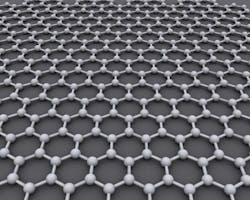
Graphene is always good for a surprise. Discovered in a spontaneous Friday afternoon experiment it brought its brave inventors an early Nobel price. Later on, it showed amazing properties such as ultimate tensile strength or unprecedented conductivity. And now it may turn out to be extremely helpful for faster ultrafast laser systems.
Unconventional absorbing behavior at very low laser fluence
In the first experiment graphene has been made by stripping off ever thinner layers of graphite. Graphite is black, and so is graphene, or in scientific words: It shows a strong absorption of light over a wide bandwidth in the visible and IR spectrum.
A group of scientists from the Helmholtz-Zentrum Dresden-Rossendorf HZDR (Dresden, Germany) investigated the IR absorption of graphene a bit more carefully. In cooperation with research groups from Berlin, Gothenburg, and Atlanta, they found a new and unexpected absorption behavior of graphene.So far it has been known that graphene bleaches out at certain laser fluence. This is a reversible effect that is used with other materials to form passive absorbers in ultrafast laser systems. It allows for the build-up of strong ultrashort pulses in these laser cavities and, hence, it is of value for the generation of sub-ps laser pulses.
When shining intense IR pulses in the range of 30 to 40 fs onto graphene the researchers found that there are two bleaching levels: A first at 7 µJ/cm2 and a second at 10 mJ/cm2. The first one is surprisingly low and agrees well with new theoretical predictions made in parallel. They assume that the effect is based on many-particle scattering of the involved electrons. This is unprecedented and differs from the model for the second bleaching level.
The low fluence bleaching depends on the electron mobility and thus is extremely fast. This would support high repetition rates, as required for new high average power fs-laser systems. Given the broad absorption spectrum of graphene, it might be useful for almost the entire visible and IR spectrum.
“Graphene is a very promising absorber material--it is very stable and well suited for a wide range of wavelengths” commented Jacob König-Otto, one of the experts from HZDR. “Our findings contribute to the understanding of fundamental processes and could help to build better absorbers.”
References: www.nature.com/articles/ncomms15042
T. Winzer, M. Mittendorff, S. Winnerl, H. Mittenzwey, R. Jago, M. Helm, E. Malic, A. Knorr: Unconventional double-bended saturation of carrier occupation in optically excited graphene due to many-particle interactions, in Nature Communications, 2017 (DOI: 10.1038/NCOMMS15042)
About the Author
Andreas Thoss
Contributing Editor, Germany
Andreas Thoss is the Managing Director of THOSS Media (Berlin) and has many years of experience in photonics-related research, publishing, marketing, and public relations. He worked with John Wiley & Sons until 2010, when he founded THOSS Media. In 2012, he founded the scientific journal Advanced Optical Technologies. His university research focused on ultrashort and ultra-intense laser pulses, and he holds several patents.

